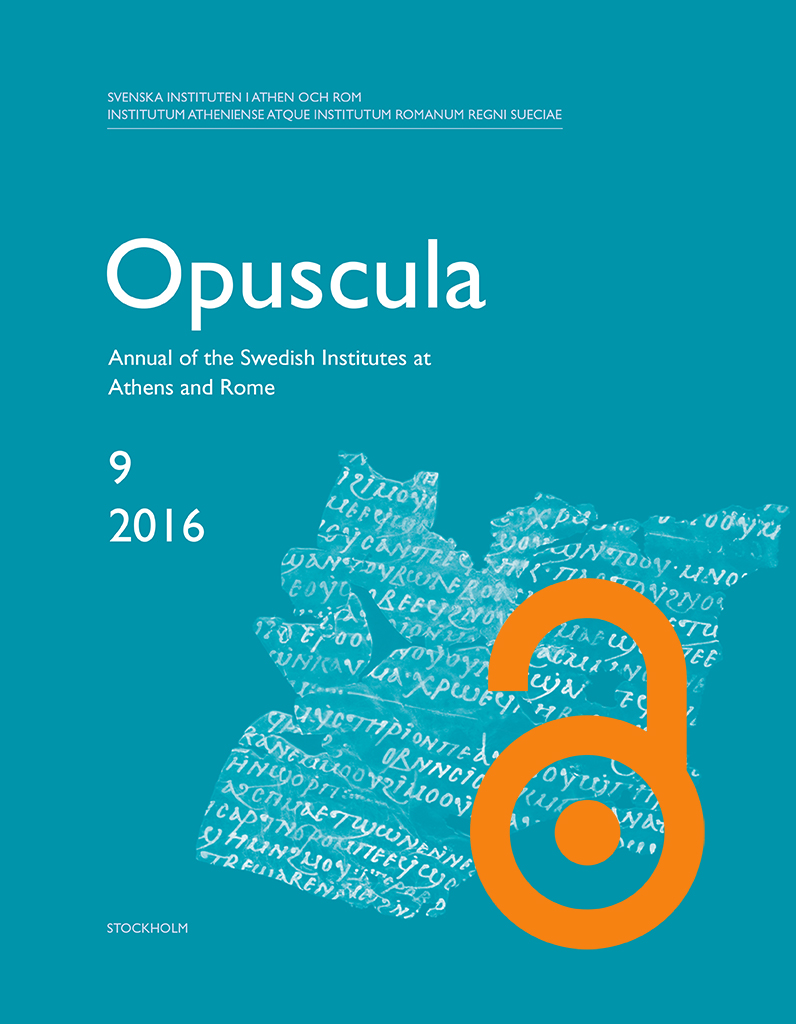Opuscula 9 (2016) is now available for purchase and free download at bokorder.se Also available at Amazon.com, Amazon.de, Bokus.com and Adlibris.com. Later, laterculus, and testa. New perspectives on Latin brick terminology By Henrik Gerding Abstract For centuries antiquarians and archaeologists have tried to reconcile the terminology of ancient writers on architecture, such as Vitruvius, with the perceived realities of the material record. One particular issue of debate concerns the interpretation of different words for “brick” in Latin. In this paper it is argued that earlier attempts to settle this question are unsatisfactory and leave several problems unresolved. A thorough examination of literary and epigraphic sources, combined with new insights in Hellenistic brick usage, suggests that primary distinctions in Latin brick terminology were based on shape and size, rather than on a mere division between fired and unfired bricks. Thus, it is argued that later basically signified a large moulded block, but normally was used to indicate mud bricks; that laterculus changed over time from being a diminutive (a small later) to becoming the standard term for the relatively thin fired bricks of the Roman Imperial period; and that testa originally and primarily signified a fragment of a roof tile (or…
All content available with open access, use links below. Printed edition distributed by eddy.se AB at Bokorder.se. Also available at Amazon.com, Amazon.de, Bokus.com and Adlibris.com. View volume at ERIH PLUS. Contents Henrik Gerding | Later, laterculus, and testa. New perspectives on Latin brick terminology Peter M. Fischer & Teresa Bürge | The New Swedish Cyprus Expedition 2015. Excavations at Hala Sultan Tekke. Preliminary results. With a contribution by D. Kofel Eleni Fassa | Divine commands, authority, and cult. Imperative dedications to the Egyptian gods Stella Macheridis | Home, refuse, and reuse during the Early Helladic III to the Middle Helladic I transitional period. A social zooarchaeological study of the Asine bothroi Melissa Vetters, Ann Brysbaert, Maria Ntinou, Georgia Tsartsidou & Evi Margeritis | People and plants. Piecing together archaeological and archaeobotanical data to reconstruct plant use and craft activities in Mycenaean Tiryns Jesper Blid, Fr Maximous El-Antony, Hugo Lundhaug, Jason Zaborowski, Meira Polliack, Mengistu Gobezie Worku & Samuel Rubenson | Excavations at the Monastery of St Antony at the Red Sea Serena Sabatini | Textile tools from the East Gate at Mycenaean Midea, Argolis, Greece Svante Fischer & Fernando López Sánchez | Subsidies for the Roman West? The flow of…


